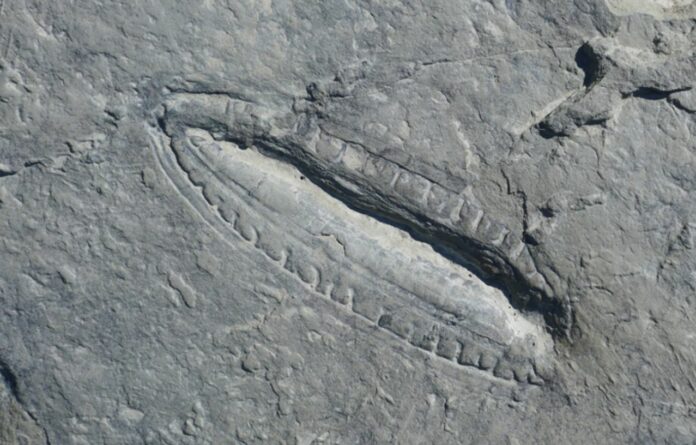Australian National University scientists have uncovered new clues about the physiology of our earliest animal ancestors, known as Ediacaran Animals or the Ediacara biota by analyzing the contents of the last meal enjoyed by the earliest animals known to inhabit Earth more than 550 million years ago.
Ediacaran Animals are thought to be the world’s earliest large creatures, dating back 575 million years.
Scientists from ANU found that the animals ate bacteria and algae from the ocean floor. The findings, which were published in Current Biology, provide more details about these strange organisms, including how they consumed and absorbed food.
The scientists analyzed ancient fossils containing phytosterol molecules, which are natural chemical compounds derived from plants which remained after the animals’ last meal. By analyzing the molecular remains of the creatures’ food, scientists were able to prove that the slug-like organism, Kimberella, had a mouth and a gut and digested food similar to modern animals. Researchers say that it was probably one of the most advanced Ediacaran creatures.
The ANU group also discovered another species, which could reach a length of 1.4 meters and had a rib-like design imprinted on its body, but was much simpler and lacked a mouth, digestive system, or eyes. Instead, the strange animal, which was called Dickinsonia, ate as it moved across the ocean floor.
“Our findings suggest that the animals of the Ediacara biota, which lived on Earth prior to the ‘Cambrian Explosion’ of modern animal life, were a mixed bag of outright weirdos, such as Dickinsonia,” says lead author Dr. Ilya Bobrovskiy, “and more advanced animals like Kimberella that already had some physiological properties similar to humans and other present-day animals.”
Kimberella and Dickinsonia are both part of the Ediacara biota family, which lived on Earth about 20 million years before the Cambrian Explosion, a major event that changed the course of evolution for all life on Earth. Their structure and symmetry are unlike anything that exists today.
“Ediacara biota really are the oldest fossils large enough to be visible with your naked eyes, and they are the origin of us and all animals that exist today. These creatures are our deepest visible roots,” adds the author.
According to Professor Jochen Brocks, a co-author of the study, algae are a valuable source of nutrients and energy and may have helped in Kimberella’s development.
“The energy-rich food may explain why the organisms of the Ediacara biota were so large. Nearly all fossils that came before the Ediacara biota were single-celled and microscopic in size,” Professor Brocks adds.
Scientists at ANU were able to take out and study the sterol molecules in the fossil tissue by using advanced chemical analysis techniques. Animals have cholesterol, which is how the ANU team confirmed in 2018 that Ediacara biota are among our earliest known ancestors.
The chemicals’ unique characteristics revealed the animals’ diets shortly before they died. Professor Brocks said that it was hard to tell the difference between the signatures of the fat molecules of the creatures, the algal and bacterial remains in their guts, and the decaying algal molecules from the ocean floor that were all trapped together in the fossils.
“Scientists already knew Kimberella left feeding marks by scraping off algae covering the sea floor, which suggested the animal had a gut. But it was only after analysing the molecules of Kimberella’s gut that we were able to determine what exactly it was eating and how it digested food,” Professor Brocks adds.
“Kimberella knew exactly which sterols were good for it and had an advanced fine-tuned gut to filter out all the rest.
“This was a Eureka moment for us; by using preserved chemical in the fossils, we can now make gut contents of animals visible even if the gut has since long decayed. We then used this same technique on weirder fossils like Dickinsonia to figure out how it was feeding and discovered that Dickinsonia did not have a gut.”
Both the Kimberella and Dickinsonia fossils were discovered in 2018 by Dr. Bobrovskiy on rocky outcrops near the White Sea in Russia, a wild region filled with bears and mosquitoes.
Source: 10.1016/j.cub.2022.10.051
